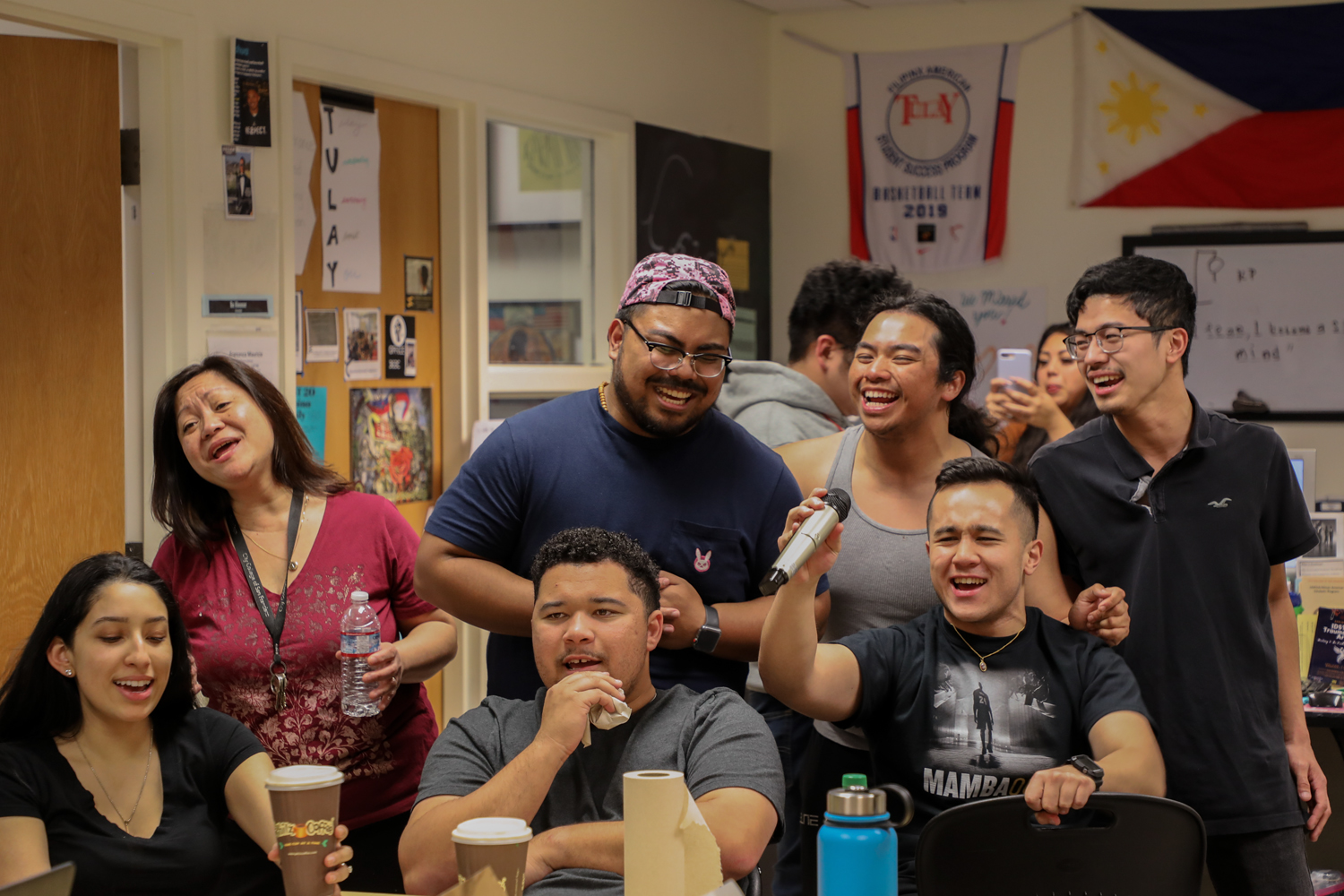Tulay Students Celebrate New Semester Through the Sound of Music
By Alexa Bautista
abauti34@mail.ccsf.edu
On Feb. 5, the Tulay Program hosted a karaoke night to celebrate the Spring 2020 semester. The Tulay Program, “Bridge” in Tagalog, reaches out to City College’s Filipinix community through differ-ent student-centered services, and to help students promote a strong sense of community and identity.
With American songs such as “I’m Not The Only One” and “We Don’t Talk Anymore” to Filipino songs “Buwan” and “Diwata”, the atmosphere of Tulay was cheerful, and it created a good bonding experience for everyone who attended.
Through these songs, it made everyone feel like a family, and that there were no differences between all of them. With laughter, encores, and encouragement, the students attending the event made sure that everyone is accepted.
Community
Many students such as Michael (MJ) Villanueva, who is a second generation Filipino American, found a loving community through the Tulay Program,
“At first Tulay was able to get my lab hours and I knew I had a counselor here. I thought I could handle things alone until I started utilising it and getting more intimate with the space, and was able to create bonds and have a support system offered. It has become something I get to look forward to every day.”
Other students such as Guada Nobel, who is a first generation Filipino American, found Tulay helpful for her educational needs, and a way for the City College community could be surrounded with a place that is accepting. “I think what people should know about Tulay is that it’s a safe space. I remember coming to CCSF and I was under a lot of stress because of what was happening at the time. Tulay was able to support me emotionally and academically.
Many people might not have a place to turn to for help, and Tulay is the place to be for their needs.”
The Tulay Program, continuously promotes to “Bridge” the gap for Filipino immigrants to discover their true potential at City College, their academic careers, and future career goals. Tulay also does off-campus outreaches where they would visit other Filipino communities such as West Bay, which serves elementary to high school students, for after school programs.

Photo by Amal Ben Ghanem/The Guardsman.
Program History
In the early 2000’s, the students involved in the program PEACE (Philippinos in Education, Arts, Culture and Empowerment) and Tulay wanted a retention center that was comfortable and a space where they would be able to relate to one another. The program was able
to have a space with APASS (Asian Pacific American Student Success Program), but later advocated for their own separate location.
Unfortunately, many disagreed on this notion and told PEACE that they must stay with APASS. This is because wherever there is a lot of foot traffic for a specific program, the more support they get from City College. By 2012, the two programs were able to retrieve a center, and in 2013, operations officially started. Music has always been a big part of Filipino culture. In many Filipino households, it is highly unlikely that there would not be a karaoke machine. Through song, many Filipinos discover togetherness and happiness during family gatherings. Moreover, dances such as the tinikling and cariñosa, traditional Filipino dances, promote unity and connection with Filipino culture.
Music in the Philippines has been heavily influenced by the West because of 45 years of American rule and 333 years of Spanish rule. There are many different types of music such as pop music, indigenous songs, and religious songs. For instance, in indigenous songs,
there are many different kinds of instruments that are made of wood, bronze, or bamboo. The Kubig, a jaw harp, is used to communicate with ancestors and weddings.
Challenges
The amount of Filipinos immigrating to the United States has increased exponentially over
the past decades. According to the U.S. Census Bureau, in 2016, there was an estimated 2 million Filipino immigrants living in the United States, whereas in the 1980’s, the population was around 500,000. This growth in population came from the Immigration and Nationality Act, also known as the Hart-Celler Act, abolished the National Origins Formula in 1965 which were quotas that favored immigrants from Europe. The Philippines and the United
States have created long-established educational and economic opportunities as well.
Despite these opportunities, many Filipinos are still at risk for isolation, violence, discrimination in the work force, and poverty which results in a decline in mental health. Many of the stresses that Filipinos endure, root from the lack of sense of belonging and security for a better future.
Francesca Mauricio, program manager, actively encourages students from any race or ethnicity to join and to be part of a family at City College. “Tulay is a place not only for the Filipino community, but for anyone who is looking for a place to connect to. For instance, high schoolers transitioning to college. I’m here for all students and Tulay is here for all students. This is a place where students can surround themselves with a community and even better
themselves.”
